The arrival of another Leap Day got us thinking about the many places in Scotland (usually chasms, gorges or narrow parts of rivers) that have the word “leap” in their name.
My mind immediately sprang to memories of visiting Postie’s Leap on family holidays to Ballater. Others on the team jumped at the chance to extol the virtues of their local leap. In a hop and a skip, we’d named heaps of leaps from all over Scotland.
What’s in a name?
Some leaps are rooted in folklore or fiction. Leum Fhinn (Fionn’s Leap) in North Uist is associated with the Ossianic sagas. Burley’s Leap over Crichope Linn in Dumfries and Galloway takes it’s name from an incident in Walter Scott’s The Tale of Old Mortality (1816).
Other stories are more tragic. My fond recollections of Postie’s Leap are juxtaposed against the local legend of a postman jumping to his death after being jilted on his wedding day. Similarly, Maggie’s Loup near Gullane in East Lothian is said to be named after a young woman who jumped from the cliffs after hearing of her fiancé’s death in battle.
But the most memorable Scottish leaps are named in reference to dramatic, daring jumps to safety made by individuals escaping pursuers. Here’s a few of those terrific tales to jump start your Leap Day.
Lord Oliphant’s Leap
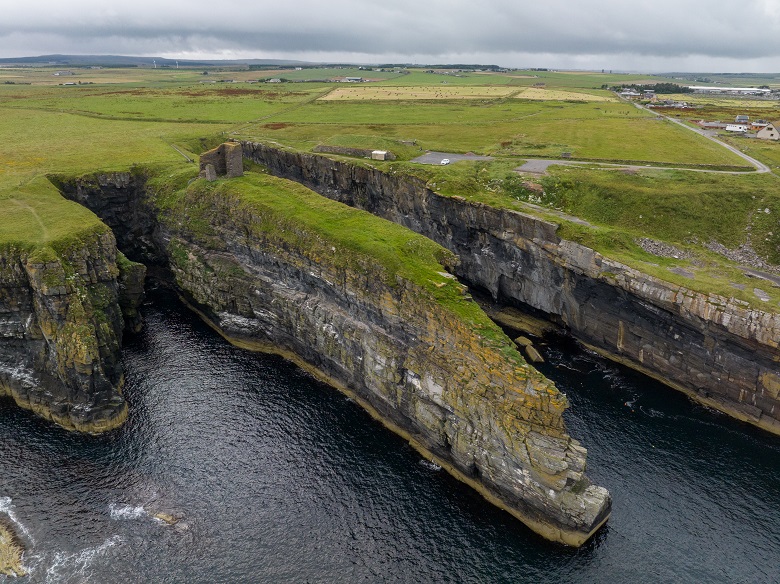
On the windswept cliffs of Caithness you’ll find the ruins of Castle of Old Wick, sometimes known as “The Old Man of Wick”. The full history of the castle is obscure, but we do know that it was associated with the powerful Sutherland and Oliphant families.
The latter gives rise to another nickname: Lord Oliphant’s Leap. The story goes that, sometime in the 1500s, Lord Oliphant was out hunting when he was attacked by a rival, the Earl of Caithness.
Oliphant rode desperately for home, but the castle drawbridge was closed. With seconds to spare, his horse managed to make a magnificent leap to safety. We hope the flying filly got some extra special treatment after that!
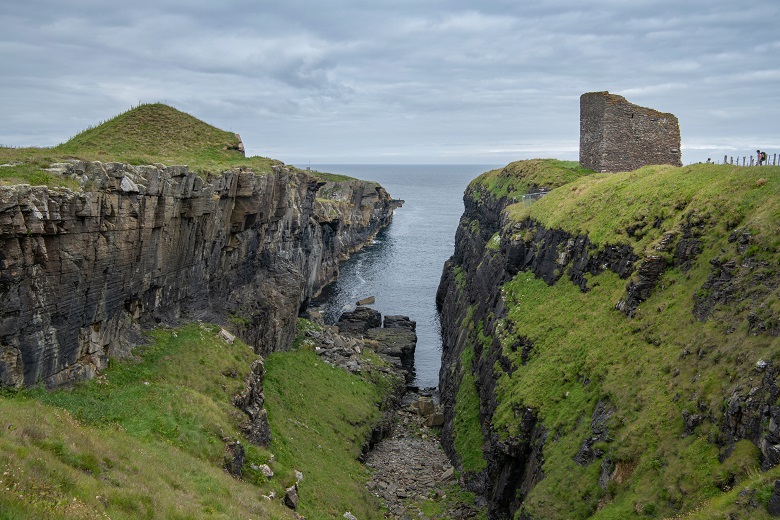
Cargill’s Leap
In Perthshire, on the edge of Blairgowrie, there’s a particularly narrow and dramatic stretch of the River Ericht. It was here in around 1665 that local man and ardent Covenanter Donald Cargill evaded military capture by leaping over the swirling waters.
Local knowledge no doubt aided Cargill in choosing his escape route – he was born on a farm in nearby Rattray around 1610. After attending university in St Andrews and Aberdeen, he served as a minister in Glasgow for some seven years.
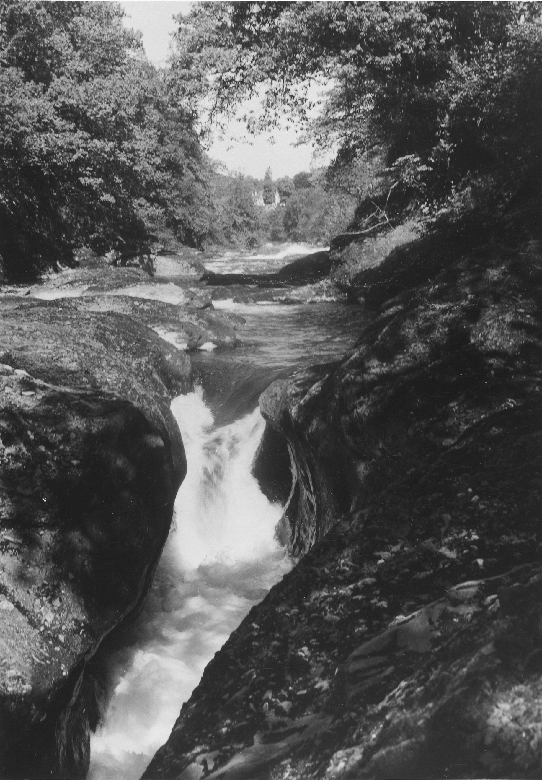
A 1950s photo of Cargill’s Leap. Our archive notes that “the chasm is no longer the same as when Cargill’s jumped as the rocks were blasted away to widen the gap and improve public safety and the fishing.” (© St Andrews University Library, licensed via Scran).
But his vocal support for the Covenant cause saw him ousted from the Church and forced to preach outdoors, illegally. He was injured fighting for the Covenanters at the Battle of Bothwell Bridge in 1679, but escaped to recover in the Netherlands.
On his return to Scotland, Cargill continued to preach and was, by this point, a key target for the authorities. He was eventually captured in 1681. This time there was no dramatic escape and Cargill was executed in Edinburgh.
MacGregor’s Leap
Staying in Perthshire, we head to the beautifully secluded Glen Lyon, where one of Scotland’s most famous clans contribute to our list of leaps.
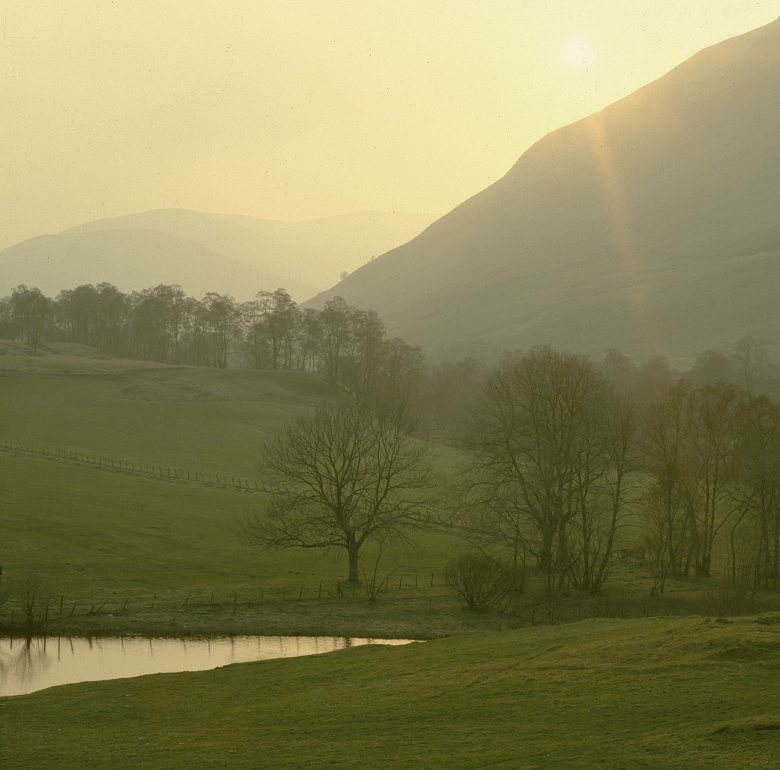
Glen Lyon (© James Gardiner, licensed via Scran)
Clan MacGregor are perhaps best known for their chief-turned-folk-hero Rob Roy. There’s another piece of clan history at MacGregor’s Leap on the River Lyon. Here, in 1565, a young chief called Gregor MacGregor is said to have launched himself to safety whilst being chased by bloodthirsty Campbells (and their dogs).
It’s certainly not advisable to try to recreate the jump – one source claims a Victorian gymnast died trying to do just that. But, according to the Scottish Country Dancing Dictionary, you can relive MacGregor’s Leap at your next ceilidh.
Randolph’s Leap
In a bit of a twist, our next leap is named after the pursuer rather than the leaper. Randolph’s Leap is situated at a narrow gorge on the River Findhorn, not far from Forres.
It’s named for Thomas Randolph, who was created 1st Earl of Moray by his uncle, Robert the Bruce. Randolph was a key player in the Wars of Independence, remembered for seizing Edinburgh Castle from the English in March 1314. He was a pivotal commander at the Battle of Bannockburn went on to sign the Declaration of Arbroath.
Before all of this, he is said to have chased a member of the Comyn family through the forests around the Findhorn. The fortunate Comyn escaped Randolph’s clutches by hurdling the the river.
In keeping with our other examples, the leap was initially named “Comyn’s Leap” but over time it took the name of the illustrious Earl. It’s not to be confused with the other Randolph’s Leap; an eight piece indie-pop band from Glasgow!
Soldier’s Leap
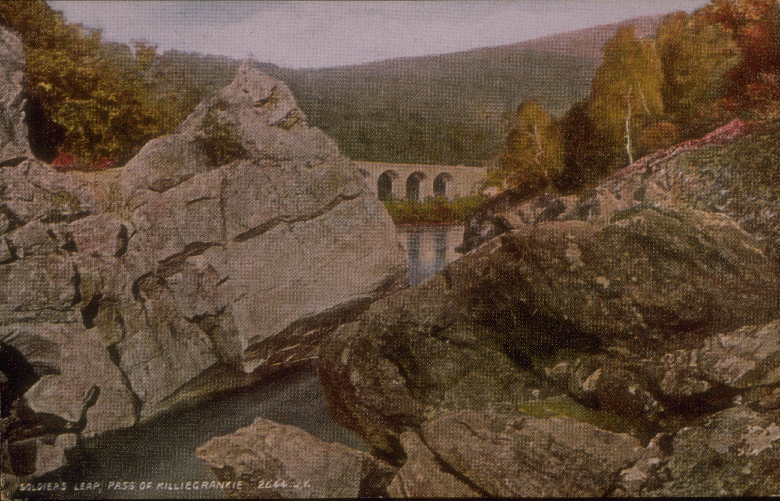
Soldier’s Leap depicted on a Victorian postcard (© St Andrews University Library, licensed via Scran)
Arguably the most famous “leap” of them all is Soldier’s Leap at Killiecrankie.
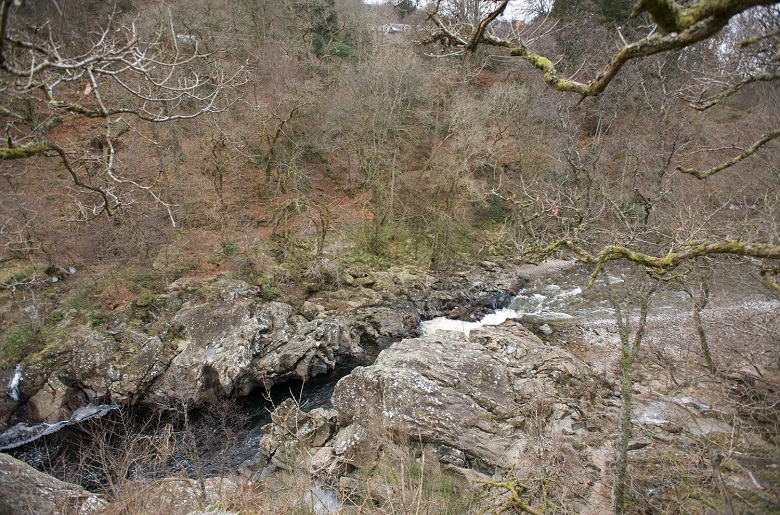
Soldier’s Leap today
The Maiden’s Leap
Let’s finish with something a little different…
Huntingtower Castle’s curious layout is key to this story. Today, the castle looks like a single building, but it originally consisted of two fine tower houses which stood about 3m apart.

Centuries ago, Dorothea, the daughter of the Earl of Gowrie, fell in love with a visitor to the castle. One night, she tiptoed out of her bed for a clandestine tryst in the adjacent tower.
But Dorothea’s mother suspected shenanigans and made her way to the guest’s room. When Dorothea heard her mother’s footsteps coming up the stairs, she had to get back to her room quickly. There was only one escape route available.
You guessed it! Desperate Dorothea made a jump of around 2.5 metres between the two towers. Her suspicious mother found her moments later, safely tucked up in her own bed!
Dorothea and her lover are said to have eloped the very next day. The gap she supposedly jumped is still known as the ‘Maiden’s Leap’ or the ‘Lover’s Leap’.
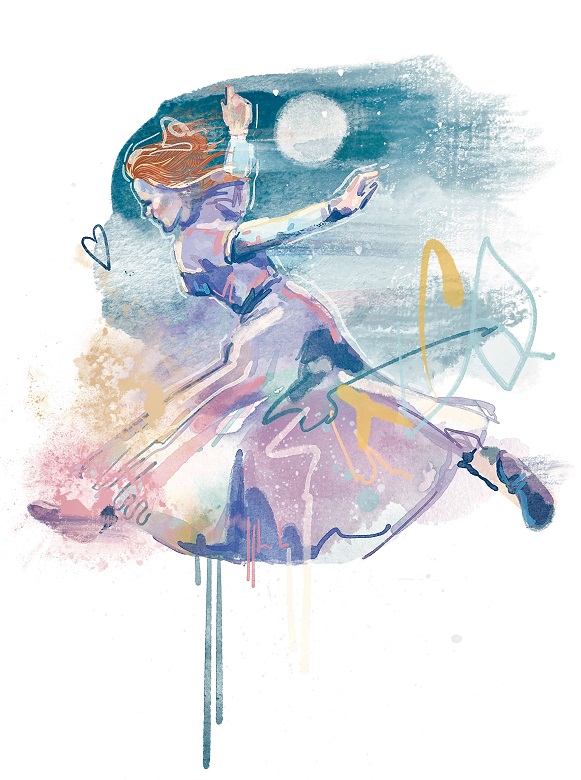
An illustration by Jacqueline Briggs of Dorothea making the “lover’s leap”
Find out more
Want to jump into some further reading? Leaps of the Imagination: The Leap Tradition in Scotland by Coinneach Maclean is an excellent overview. It can be downloaded from the University of Glasgow [PDF, 246kb].
For more legendary stories on the blog, check out our Five-Minute Folklore or an introduction to Scotland’s supernatural creatures.
PastMap is a great resource for finding historic places near you – and that might include a local leap! Needless to say, if you do visit the site of a legendary jump, don’t try it out for yourself!

